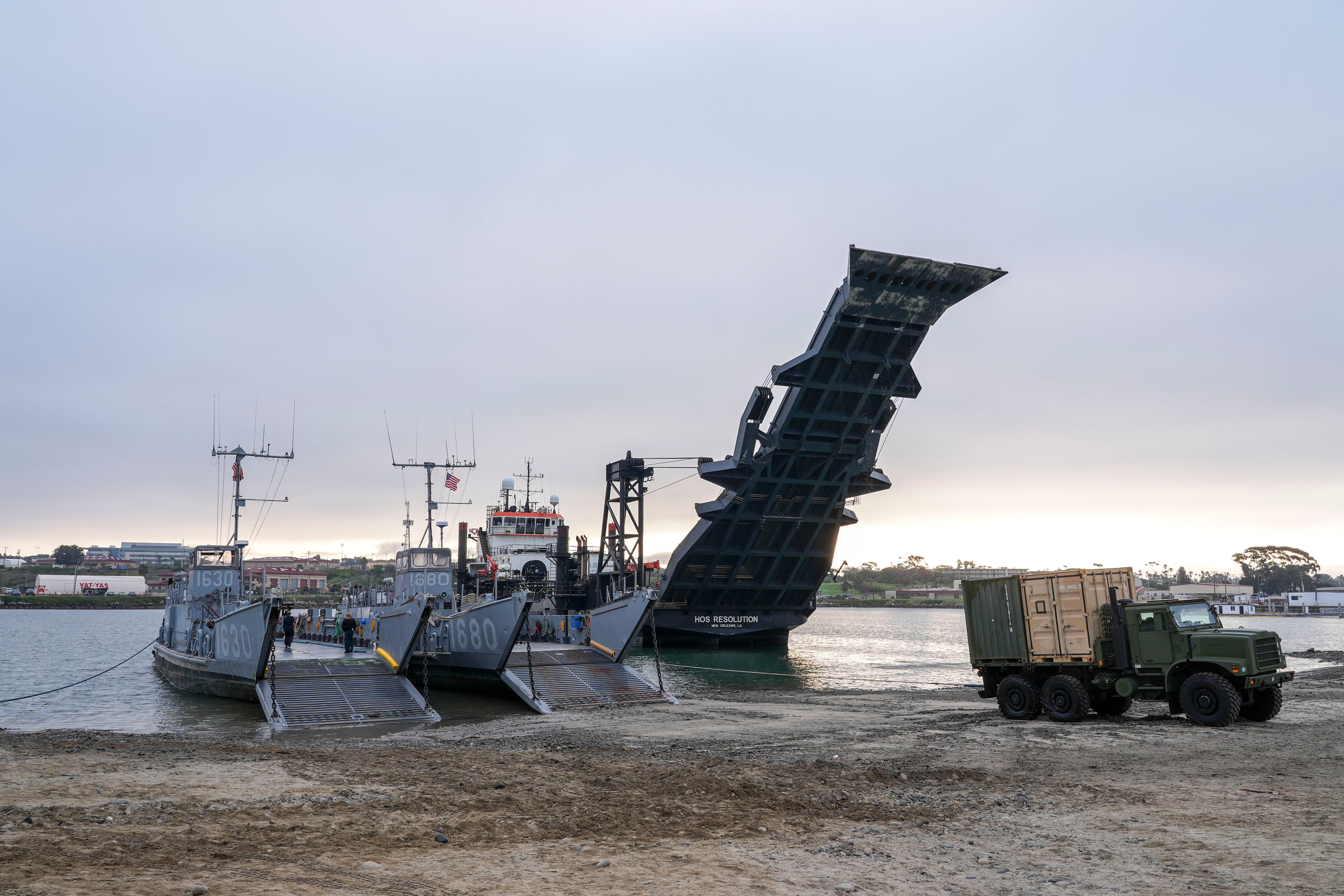The Marine Corps recently notched a series of aviation firsts with an advanced drone under development and its newest jet, as the service works toward achieving more nimble and responsive air combat power.
The Corps’ XQ-58A Valkyrie drone completed a test flight last week at Eglin Air Force Base, Florida, marking the platform’s first integration with other military branches, according to a Marine Corps release.
“The flight focused on the use of tactical data links to enable digital communication between the XQ-58A and an airborne four-ship of F-35Bs from Marine Fighter Attack Squadron 214 and other joint aircraft,” said Col. Derek Brannon, branch head for the Cunningham Group, deputy commandant for aviation.
RELATED

Those tests are how the Corps aims to team crewed aircraft with uncrewed aircraft.
The Valkyrie is the service’s test platform for new technology and concepts as the Corps pursues a central node for commanding and controlling battlefield assets.
The drone acts as a sensing platform that collects and sends back targeting data to fifth-generation aircraft such as the F-35B and F-35C, the Corps’ most exquisite — and newest — aviation asset.
The Corps first deployed the F-35B Lightning II to combat in 2018. The service has since worked to procure variants of the F-35, build out squadrons and replace the legacy F/A-18 Hornet and AV-8B Harrier.
Also, earlier this month, Marine Fighter Attack Squadron 533 became the second East Coast operational F-35B Lighting II squadron and the first such squadron aboard Marine Corps Air Station Beaufort, South Carolina.
Until now, the only other similar F-35 squadron on the East Coast has been the service’s training squadron.
Lt. Col. Zachary Hartnett, commander of Squadron 533, said the aircraft’s arrival at Marine Corps Air Station Beaufort signals a “new era” in how the service employs the advanced aircraft.
The F-35 combines the capabilities of the Hornet and Harrier while adding a suite of reconfigurable sensor platforms, which touch all of the ground, maritime and other aviation assets the service uses as part of its combined arms approach to warfighting.
On the other side of the country, Marine Fighter Attack Squadron 211, also an F-35B Lightning II unit, out of Marine Corps Air Station Yuma, Arizona, integrated the aircraft on amphibious assault ships.
Beginning in April, the unit trained with the flight deck crew of the America-class amphibious assault ship Tripoli and Marine crews from tiltrotor and rotary wing squadrons within the 3rd Marine Aircraft Wing.
That work culminated in the service marking aviation certification for day and night operations aboard the assault ship, which is a crucial step for specialized aircraft such as the F-35 to operate in the manner and mode the Marines expect in a disparate Pacific fight.
Practicing this teaming helps the various pieces of the larger aviation-maritime team learn how to operate ahead of a real-world conflict, officials said.
“The flight deck is very dynamic and can be a dangerous place, so it is imperative that we ensure the personnel on the deck are trained and qualified to safely operate around the aircraft,” said Maj. Courtenay Franklin, an F-35B pilot and aviation safety officer with Squadron 211.
In another significant milestone for Marine aviation, two Marines recently turned to 3D printing to improve aviation maintenance.
In July, the Marine Aviation Logistics Squadron 13, also in Yuma, encountered a critical shortage in reamers, a precision cutting tool critical for aviation maintenance, according to a release.
A combination of the reamers’ long procurement times and the limited lifespan threatened to stall maintenance, training and operations of Yuma-based aircraft, officials said.
Staff Sgt. Nicholas Bevan, an airframes technician, and Sgt. Landon Boroday, an aviation machinist, brainstormed a solution using 3D printing to develop a high-performance reamer that extended the tool’s lifespan by 300%.
The pair developed a process by using chopped carbon fiber strands and high-temperature resin instead of the usual high-performance thermoplastic known as Torlon, which is normally used in reamer production.
“Torlon is a high strength, highly abrasive material that doesn’t damage the aircraft structure but is still abrasive enough to remove corrosion from the aircraft,” Bevan said.
Boroday spearheaded the procurement of two Markforged X7 industrial 3D printers, which allowed the two Marines to create the reamer solution.
“I got the information on which type of reamers the supply section was ordering, I did the math, and figured out it can cost less if we print them internally,” Boroday said.
The move cut maintenance costs involving reamers by half to about $15 and reduced procurement time from a three-month wait to delivering the tool on the same day, according to the service.
Overall, the reamer solution saved the logistics unit $10,000 in tool procurement and reduced aircraft downtime by nearly 20% over a three-month period, officials said.
Maj. Gen. James Wellons, 3rd MAW commander, awarded the two Marines the Navy and Marine Corps Achievement Medal for their accomplishment.
“Their ability to develop solutions at the tactical level not only saves resources but keeps our aircraft mission-ready,” Wellons said.
Todd South has written about crime, courts, government and the military for multiple publications since 2004 and was named a 2014 Pulitzer finalist for a co-written project on witness intimidation. Todd is a Marine veteran of the Iraq War.





